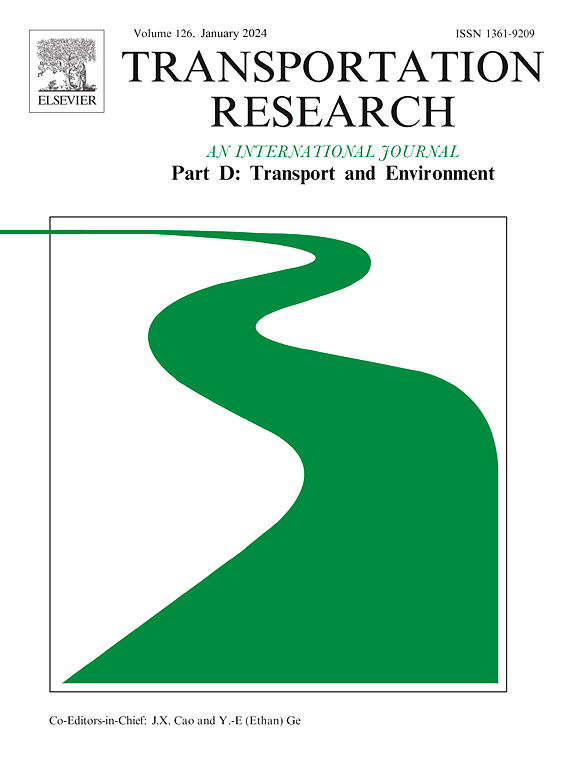Unraveling spatiotemporal dynamics of ridesharing potential: Nonlinear effects of the built environment
IF 7.3
1区 工程技术
Q1 ENVIRONMENTAL STUDIES
Transportation Research Part D-transport and Environment
Pub Date : 2025-02-01
DOI:10.1016/j.trd.2025.104594
引用次数: 0
Abstract
Ridesharing is a crucial component in optimizing urban mobility by alleviating traffic congestion and reducing emissions. However, the ridesharing potential remains underutilized, and the distribution characteristics of this potential have yet to be well quantified. This study leverages the shareability network method and interpretable machine learning techniques, utilizing high-precision taxi trajectory data, to analyze the spatiotemporal patterns of ridesharing potential in Shanghai and to elucidate the spatiotemporal dynamics of the factors influencing it. The findings reveal that ridesharing potential is highest during evening peaks, followed by weekends, and lowest during morning peaks, which contrasts with typical residential travel patterns. The results highlight the nonlinear, spatiotemporal heterogeneity of built environment impacts on ridesharing potential, with significant variations in the importance of residential, employment, and leisure factors across different time periods. These insights provide valuable guidance for urban planners and transportation network companies in enhancing operational efficiency and effectively promoting ridesharing.
求助全文
约1分钟内获得全文
求助全文
来源期刊
CiteScore
14.40
自引率
9.20%
发文量
314
审稿时长
39 days
期刊介绍:
Transportation Research Part D: Transport and Environment focuses on original research exploring the environmental impacts of transportation, policy responses to these impacts, and their implications for transportation system design, planning, and management. The journal comprehensively covers the interaction between transportation and the environment, ranging from local effects on specific geographical areas to global implications such as natural resource depletion and atmospheric pollution.
We welcome research papers across all transportation modes, including maritime, air, and land transportation, assessing their environmental impacts broadly. Papers addressing both mobile aspects and transportation infrastructure are considered. The journal prioritizes empirical findings and policy responses of regulatory, planning, technical, or fiscal nature. Articles are policy-driven, accessible, and applicable to readers from diverse disciplines, emphasizing relevance and practicality. We encourage interdisciplinary submissions and welcome contributions from economically developing and advanced countries alike, reflecting our international orientation.

 求助内容:
求助内容: 应助结果提醒方式:
应助结果提醒方式:


